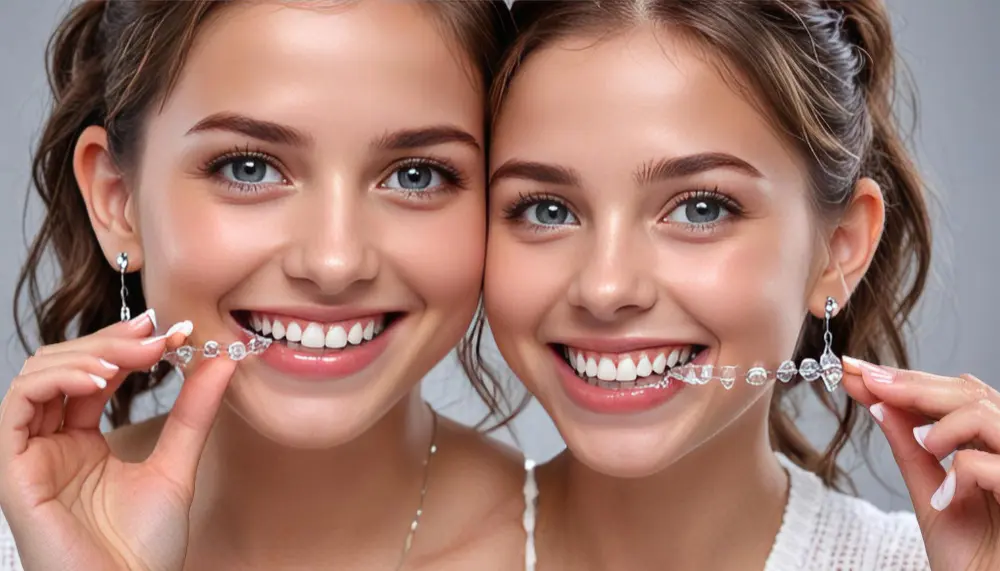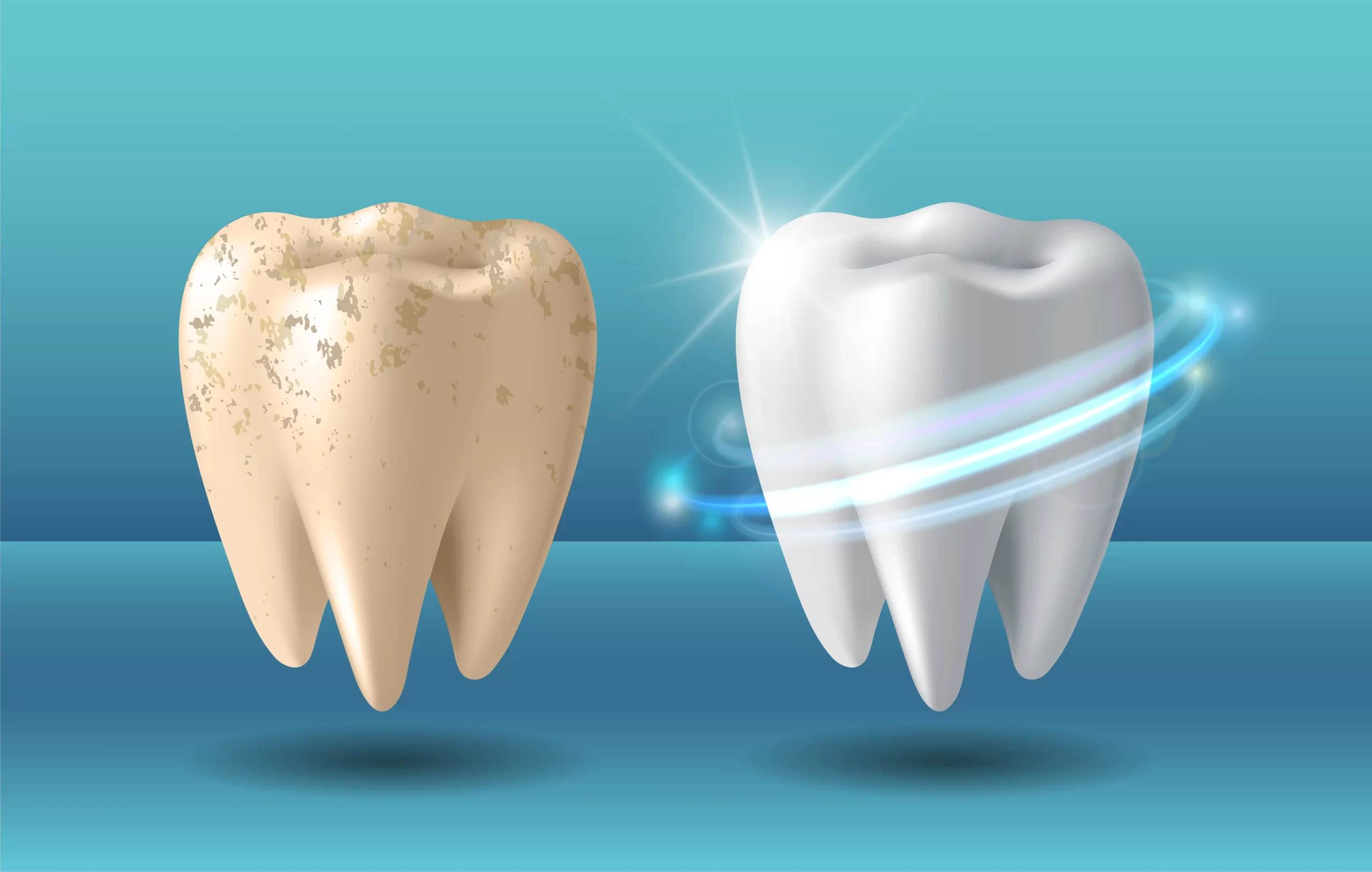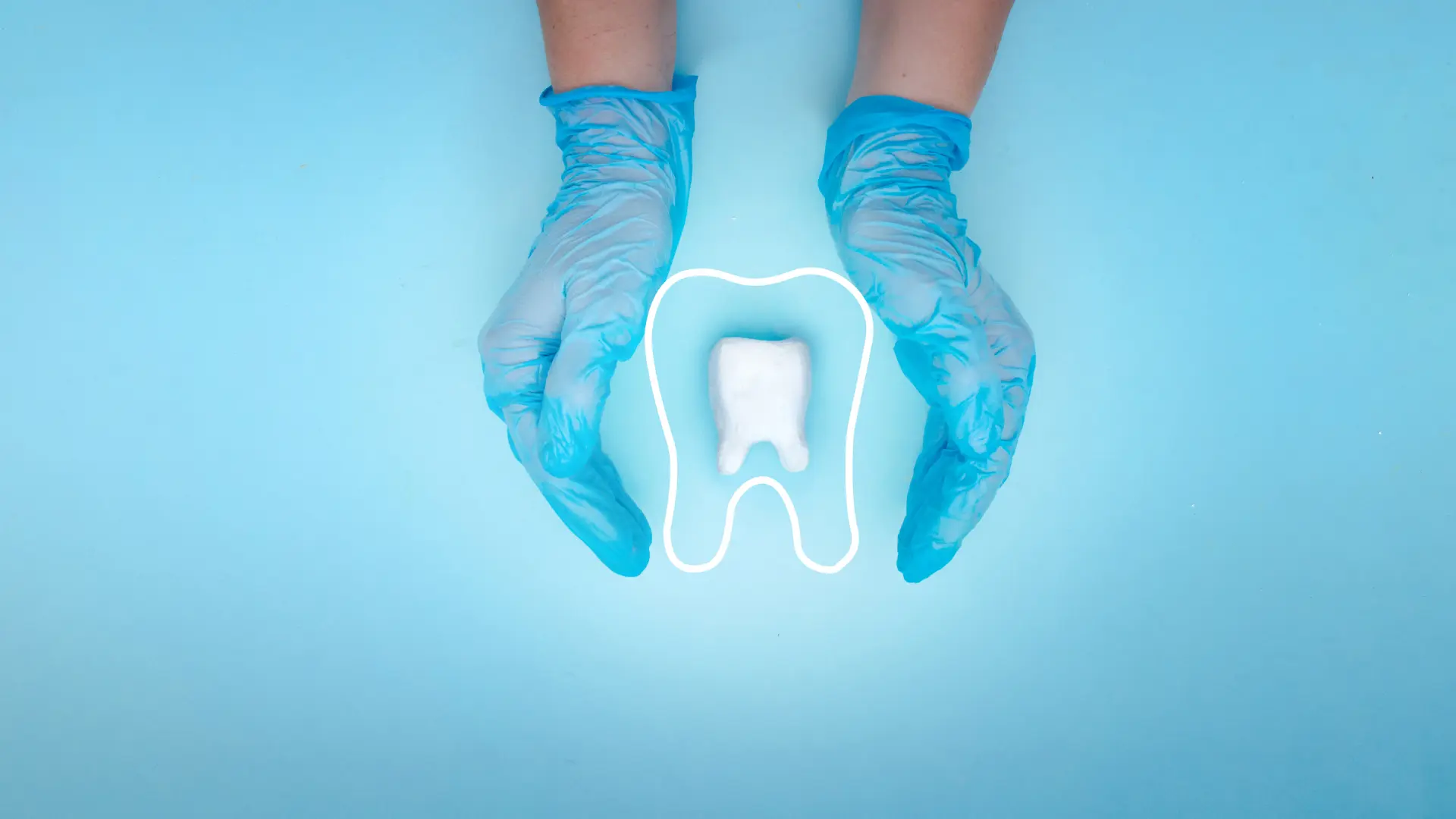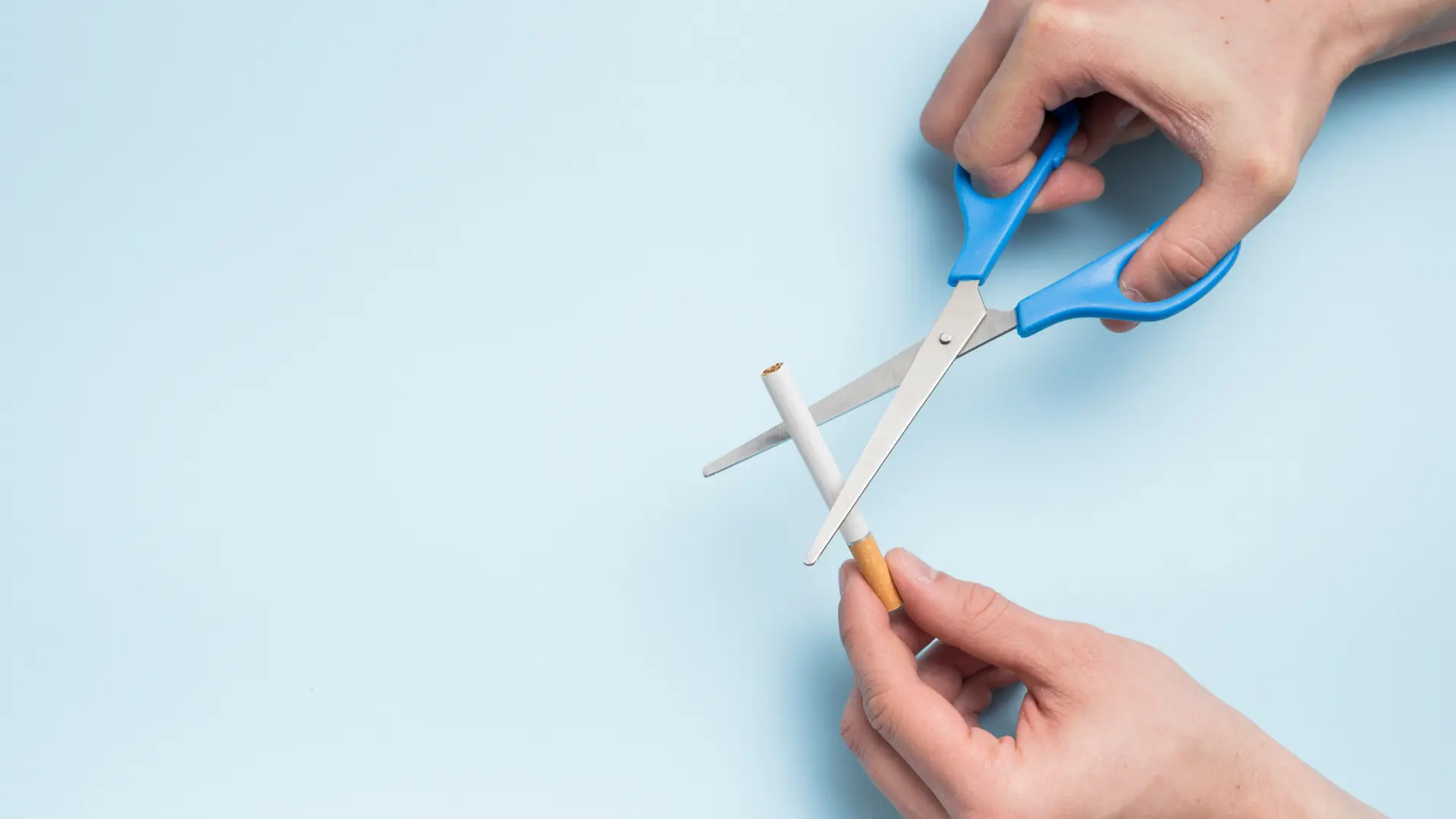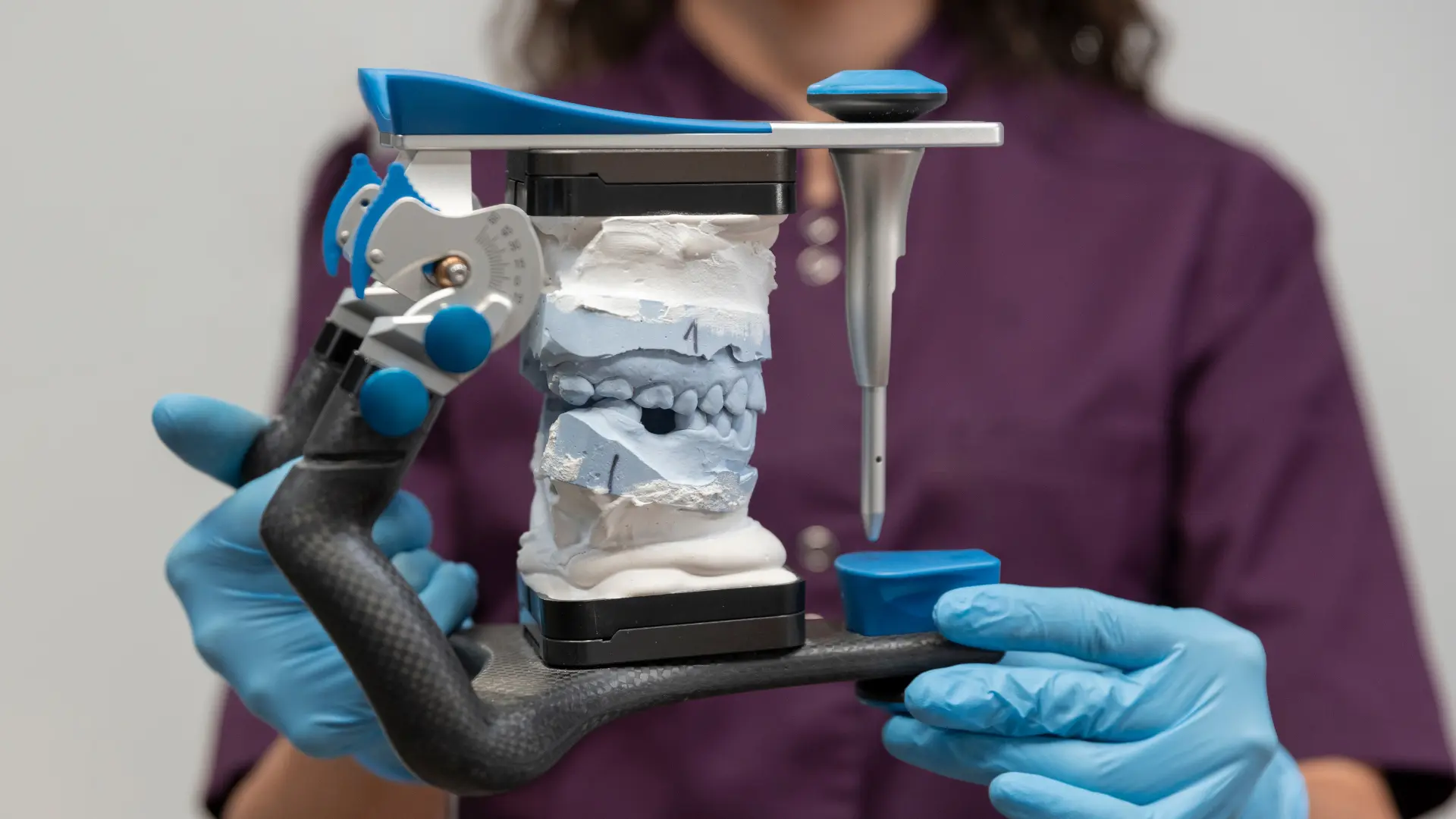A smile is one of the best confidence boosters, and it can have a positive effect on the way you feel about yourself. When it comes to choosing the best treatment to help straighten your teeth, there are two main choices available: braces and clear aligners.
Each of the methods has its advantages and drawbacks, thus, it may be difficult to determine which one to choose.
At Vitapera Clinic, we provide advanced orthodontic treatment that is customized for your situation. In this blog, we will be looking at the major distinctions between the two most common methods of orthodontic treatment – traditional braces and clear aligners.
What are Aligners?
Clear aligners are a newer approach to common orthodontic treatment – bringing a virtually invisible way of fixing your teeth. They are clear plastic and are made to fit over your teeth, they are not fixed but can be removed.
Unlike the conventional braces, they are virtually unnoticeable which makes them suitable for people who value looks. The most common duration in which a patient uses clear aligners is 20-22 hours a day and they are changed every 1-2 weeks to gradually shift teeth.
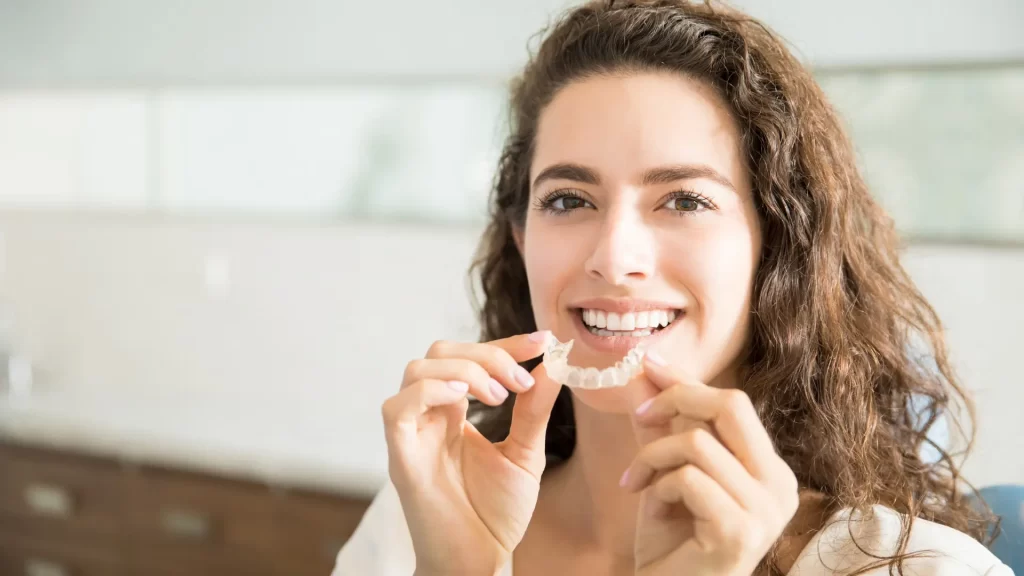
What are Braces?
Braces are the conventional method of orthodontic treatment as compared to the other options. These are metal bands which are cemented on each tooth and are linked by wires. These wires exert a force to shift your teeth into the right position that is required. Braces are one of the most effective ways of treating most of the dental problems such as severe crowding of teeth, overbite or underbite.
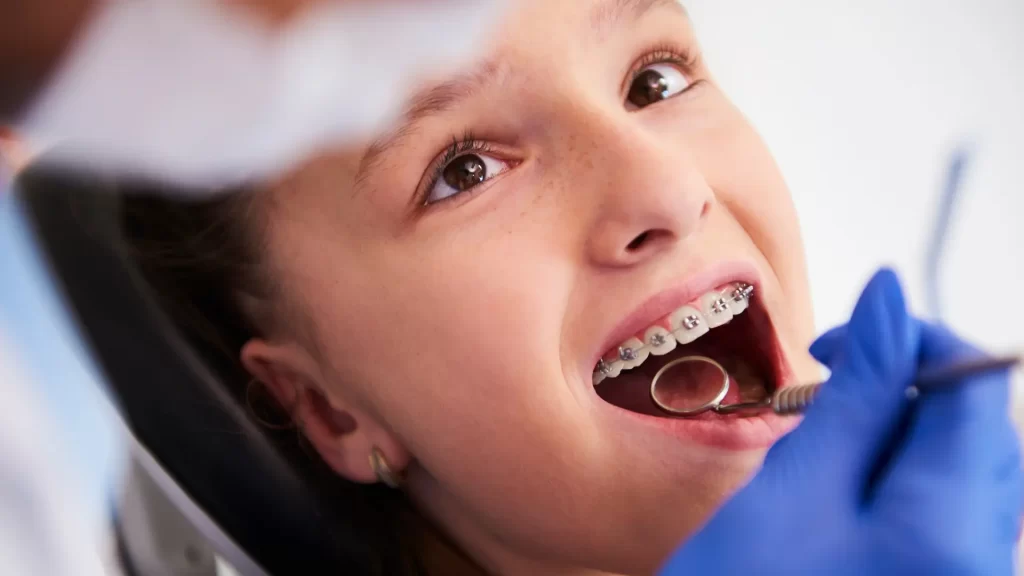
Discreet Looks
Braces
These are the most common type of braces where metal brackets and wires are cemented to your teeth. Despite the fact that there are ceramic alternatives that can match the color of your teeth better, they are still more visible than aligners. For some people, especially teens and adults who are conscious with their looks, the most visible aspect of braces is a disadvantage. However, there are those who see braces as a form of rebellion, especially when there are colored bands to choose from.
Clear Aligners
They are called clear aligners because they are not only transparent but also very difficult to notice when in use. They are inconspicuous, making them suitable for working class people or anyone who wants to keep his or her orthodontic treatment out of the public eye.
If you have any doubts about how you will look during treatment with braces, clear aligners will be an excellent choice for you. Their appearance is not conspicuous which means that you can smile without any harming reservation during the treatment.
Removability
Braces
Another significant difference between braces and clear aligners is that braces are cemented to your teeth and worn for the duration of the treatment. You cannot remove them until the treatment is complete. Although this prevents the risk of losing or forgetting to wear them, it can be uncomfortable when it comes to eating or using Utensils.
It means you will have to modify your eating habits to accommodate braces, and brushing and flossing become a little tricky to avoid food getting stuck in the brackets or wires.
Clear Aligners
In contrast, clear aligners are wearable that can be taken out easily. This feature makes it easier for you to change the way you use the application in your daily schedule. You can remove them to eat, drink, brush, or floss, which means you can eat whatever you want and it is easier to clean your teeth. Though, it is recommended to wear them for 20-22 hours in a day for better results of the treatment.
Comfort
Braces
Braces might be uncomfortable at times especially when they are adjusted during the orthodontist’s appointment. The metal brackets and wires used may rub against the cheeks leading to sores or irritation. Also, discomfort is likely to be felt due to the braces’ pressure on the teeth, especially after an appointment where adjustments were made. Although these are relatively minor complaints that often fade as time goes on, they may be a concern for those prone to discomfort.
Clear Aligners
In comparison with braces, clear aligners are usually more comfortable. The only disadvantage is that they don’t have brackets or wires which reduce the chances of mouth irritation. Aligners work by applying pressure on the teeth to move them and while it is not very painful, you may experience some discomfort when changing to a new set.
Nevertheless, this soreness is generally considered to be more tolerable than the discomfort that comes with wearing braces. The smooth, plastic design also prevents cuts or sores that can be caused by other types of handles.
Hygiene and Aftercare
Braces
Caring for teeth with braces is also a bit complicated. It is very easy for food to get trapped in the brackets and wires of the braces and this can lead to a buildup of plaque and in turn increase the chances of getting cavities and gum diseases. Other tools like interdental brushes and water flossers are required to help clean the teeth and braces effectively. It is recommended that patients undergo dental check-ups from time to time to avoid any complications with their oral health during treatment.
Clear Aligners
Clear aligners are easier to clean since they do not require complicated techniques. They are also easy to maintain and can be cleaned using toothbrush and floss just like your natural teeth, no need for dental flossers. It is also critical to clean the aligners to avoid the accumulation of bacteria. Generally, aligners are cleaned using a toothbrush or with the help of aligner cleaning solutions. Thus, the hygiene of clear aligners is significantly simpler than that of braces.
Your Eating Habits
Braces
There are a number of things that one has to avoid when having braces on, one of them being the type of food that one consumes. Some types of food, for instance candy that is sticky, chewing gum, or hard food products including nuts and popcorn, can easily harm the brackets or wires. Not only the forbidden foods like candies, chocolates or gum but even the healthy foods like apples or carrots are to be eaten in small pieces so that they do not harm the braces. These limitations can be inconvenient particularly if one likes to take a balanced diet.
Clear Aligners
There are no such limitations with clear aligners because they can be taken out. This is because you can still eat your favorite foods while having an orthodontic appliance and not have to worry about it being destroyed. However, it is better to brush your teeth before putting the aligners back in after taking a meal to prevent the accumulation of particles between the teeth and the aligner that causes tooth decay.
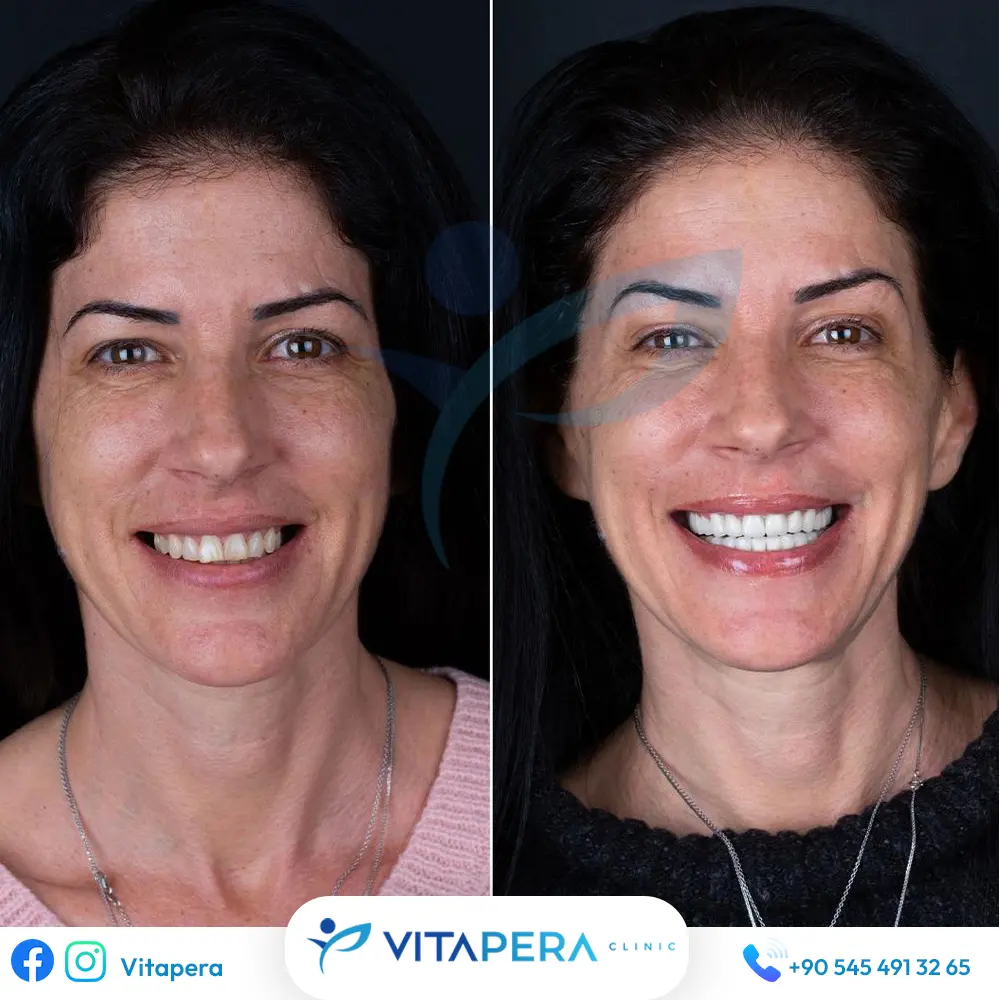
Conclusion: Which is Better, Braces or Aligners?
In most cases, the decision between braces and clear aligners may be made based on the specific situation, patient’s lifestyle, and personal preference.
Braces are more suitable for people with severe dental problems since they offer more control over the movement of the teeth. They are also suitable for people who may have difficulties in wearing aligners on a daily basis because braces are a cemented structure.
They are ideal for individuals in search of a virtually invisible and convenient treatment solution. These are ideal for minor to moderate alignment problems and are a good option for patients who wish to eat what they want and continue with their oral hygiene as usual.
At Vitapera Clinic, it is our belief that no two smiles are alike. Our qualified professionals will help you decide on the best course of action and will provide you with braces or clear aligners that will meet your specific needs and expectations. Contact us today to schedule your appointment and take the first step toward getting the perfect smile you’ve always wanted!
FAQ
Are aligners more affordable than braces?
Invisalign aligners are usually more costly than the regular braces since they are almost invisible and are technologically enhanced. However, the cost differs with the type of case and the health facility that is providing the treatment.
Are aligners slower than braces?
In many cases, aligners will likely take the same or even less time than braces for mild to moderate correction. Nevertheless, for more complicated situations, braces might be more effective.
Who should not use aligners?
In some cases, patients with severe misalignment, certain dental complications, or those who cannot wear aligners for the recommended hours may not be good candidates for aligner treatment.
Can teeth move with aligners?
Yes, slight movement is expected as the teeth shift into their new positions. This is a good sign that the aligners are doing their job but if it feels like the teeth are moving too much it is better to contact your orthodontist.
Which one is more effective between Invisalign and braces?
For mild to moderate cases, Invisalign may take less time than braces to achieve the best results. But, braces are generally better for more severe dental problems.





